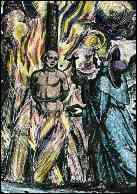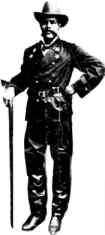Lucky Luciano Not So Lucky in Cuba
By now its common knowledge that American mobsters found a “willing partner” in Cuban governments of the 1940s and ‘50s, and that Meyer Lansky had a friendship and business relationship with Cuban dictator Fulgencio Batista, but did you know that famed mobster Charlie “Lucky” Luciano spent six months in Cuba after his deportation from the U.S.?
At the end of WWII Luciano was released from a U.S. jail and deported to Italy, but he didn’t stay there very long. Cuba had become a curiosity to Luciano, who had close ties to Lansky and was fully aware of the drug trafficking lanes and the strong ties to the island’s government.
On September 19 1946, Luciano was issued a Cuban passport, and that same day he left Italy. Within a week he was in Havana.
Luciano liked Havana, and he took a luxurious suite at the Hotel Nacional. There he presided over one of the largest mafia meetings ever held, (Dec. 22-26, 1946). At his side were Frank Costello, Vito Genovese, Albert Anastasia and Meyer Lansky. The hotel was closed to the public for that week, and Frank Sinatra made his singing debut in Havana, in honor of Luciano.
Also attending that historic meeting were: Mike Miranda, Joseph Magliocco, Joe Adonis, Tommy Luchese, Joe Profaci, Willie Moreti, the Fischeti brothers (heirs to Al Capone), Santo Trafficante and others. Among the topics discussed was the execution of Bugsy Siegel.
Luciano moved into the exclusive neighborhood of Miramar, a few blocks away from President Grau San Martín’s mansion, and settled into a life of parties, romance and luxury.
In the U.S., Harry J. Anslinger, commissioner of the Bureau of Narcotics of the U.S. Treasury Department, was aware of Luciano’s moves in Cuba, and tried to pressure Cuban President Grau San Martín to send the mobster back to Italy.
President San Martín, and the Auténtico Party leaders, took the position that, in spite of Luciano’s past life in crime, he had broken no Cuban laws and should not be deported.
Anslinger turned up the heat and got U.S. President Truman to support his request. The Cuban government did not budge. San Martín argued that if the Cuban government was a free government, it could issue visas to whomever it wanted. But this, of course, was not the case.
After a brief battle of wits, words and headlines, the U.S. government announced that Cuba would be subjected to an embargo of pharmaceutical products until Luciano was deported. (The logic being that as long as Luciano was importing illegal drugs into the U.S., Cuba would not be allowed to receive the legal drugs it needed.)
A round of discussions took place, and Lansky went to Florida to consult with Batista. It was too late. On February 23 1947, Luciano was arrested at a restaurant in Vedado. They were very polite to each other, and Luciano said goodbye to his guards and companions, and left with the police, who escorted him to his house to pick up necessary personal items.
On March 29 1947, Luciano left Cuba aboard a Turkish freighter. Popular personality Eduardo Chibás reported the departure in his popular Sunday night radio program.
Luciano was not charged with a crime in Cuba. Once he was gone, the Cuban police investigated no other U.S. gangster figures, and there were no investigations of any criminal activity by the Mafia. Lansky and Genovese rose up in power, and a few years later Havana became the Latin Las Vegas that Lansky had envisioned.



